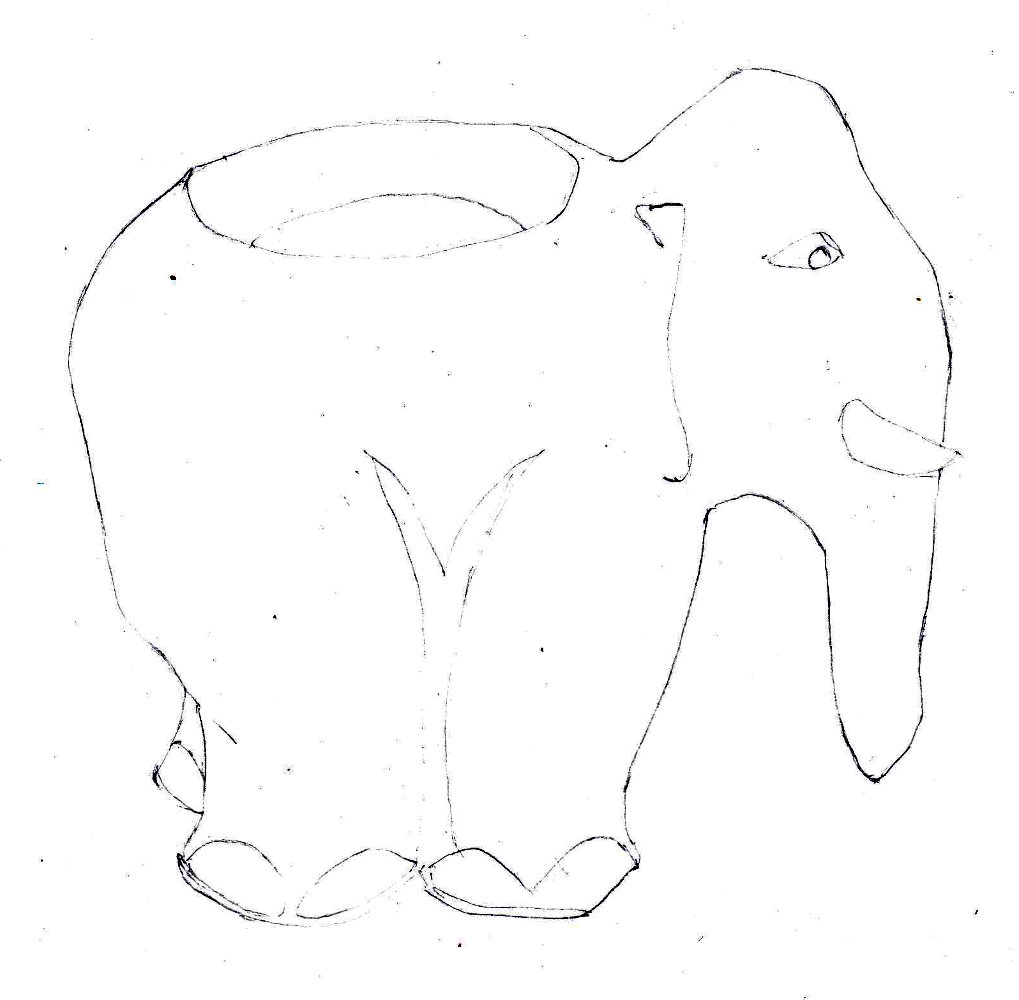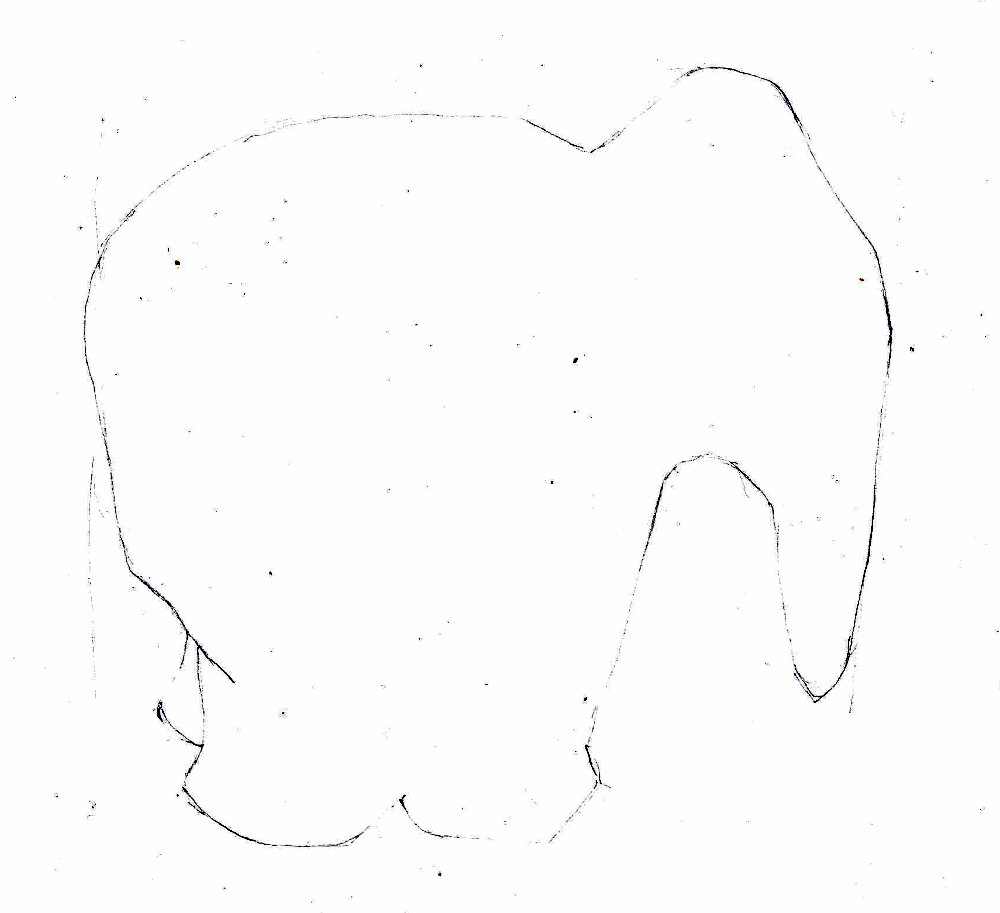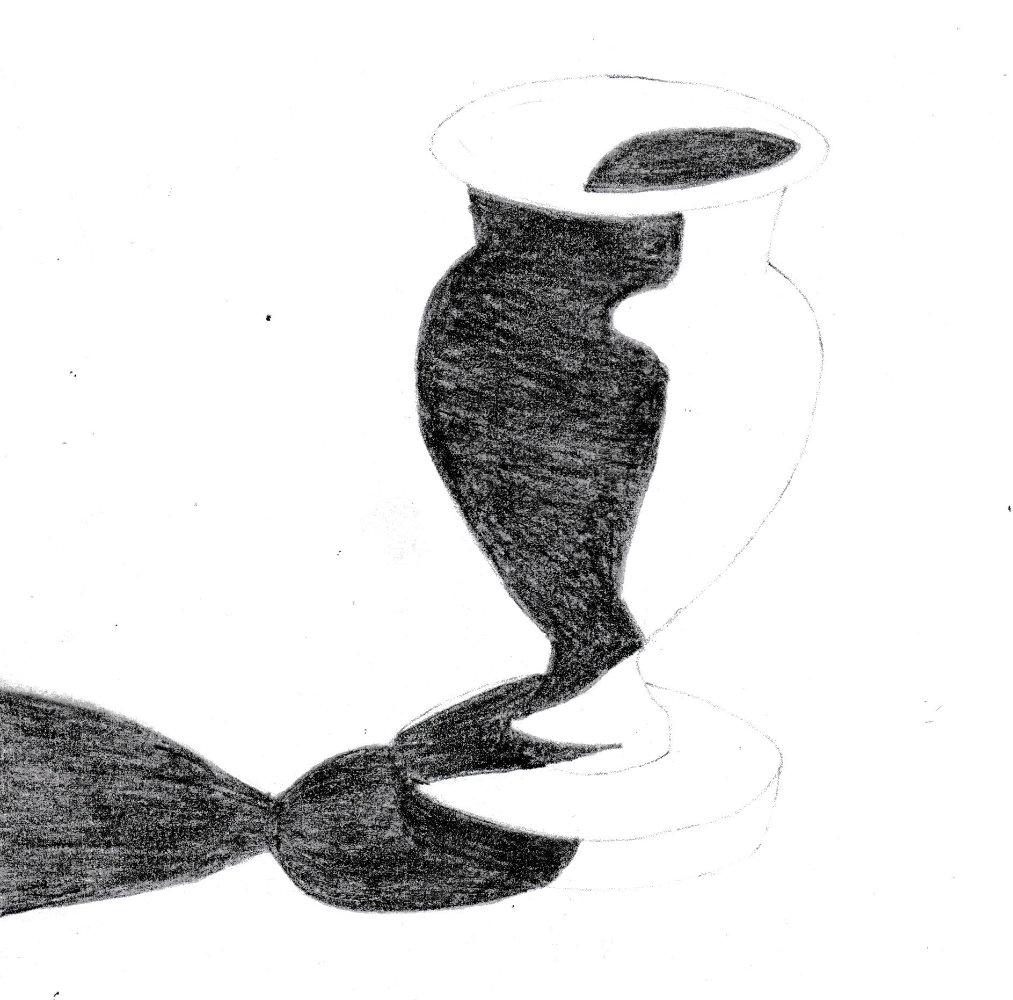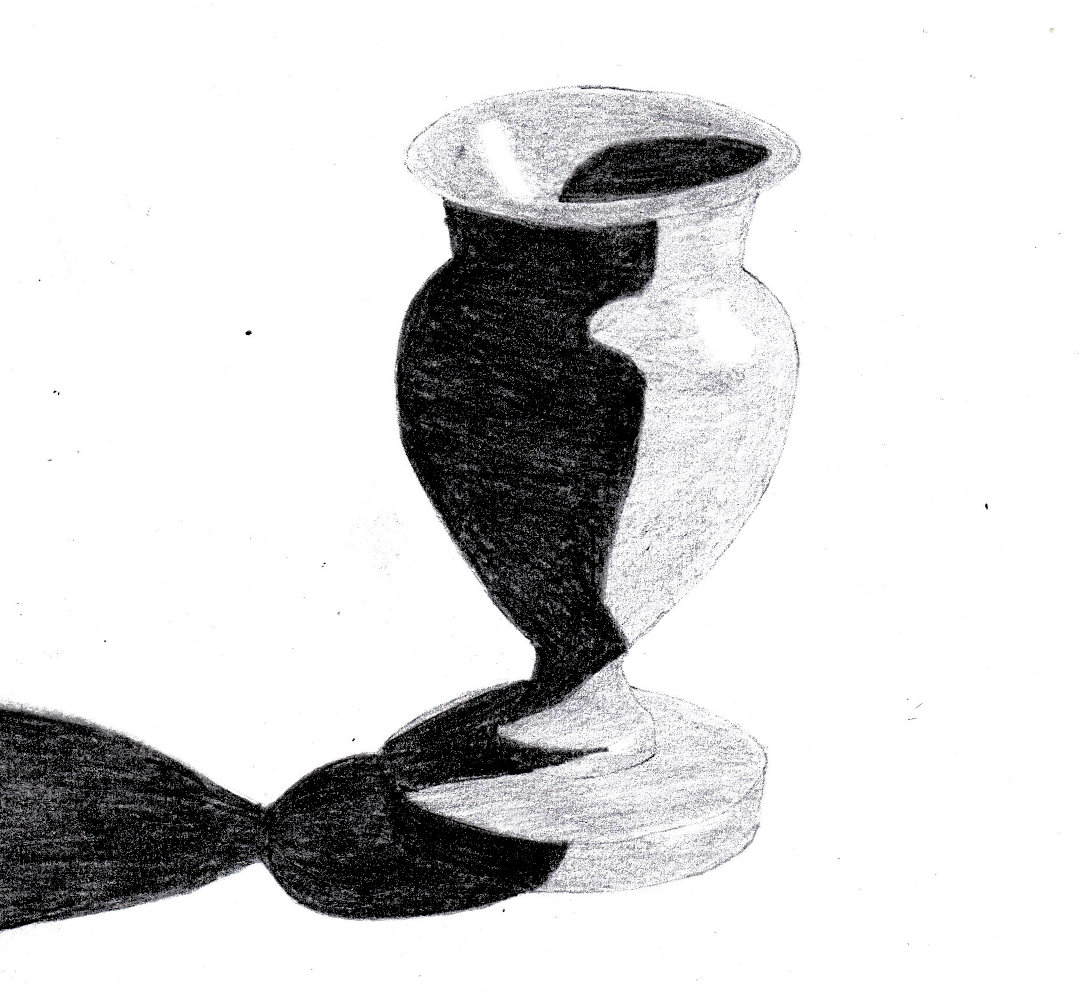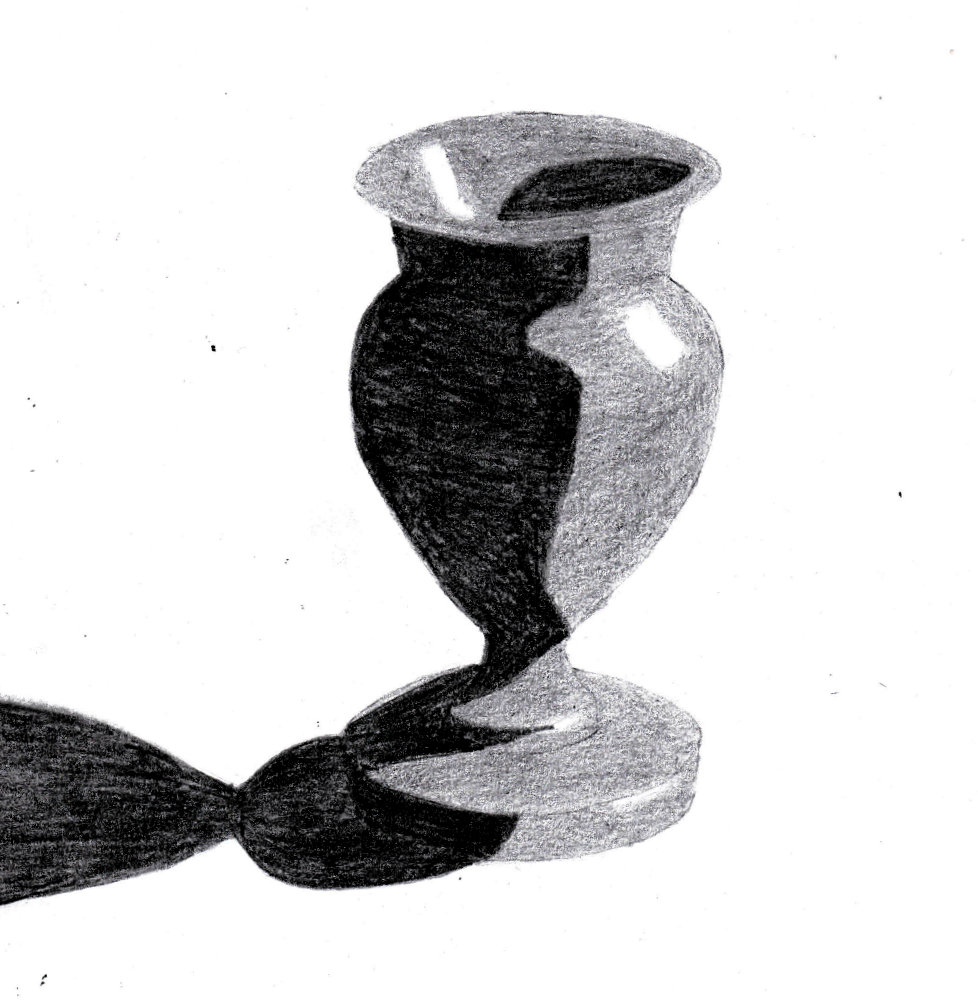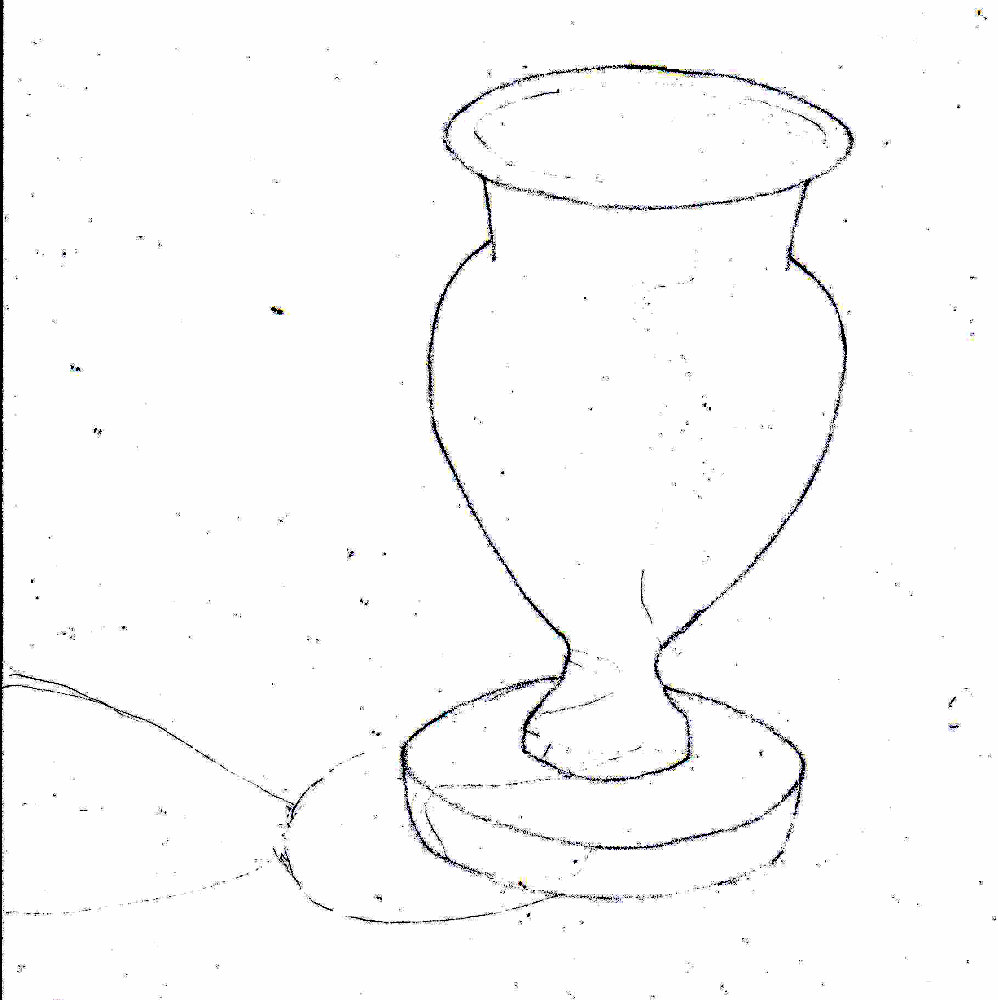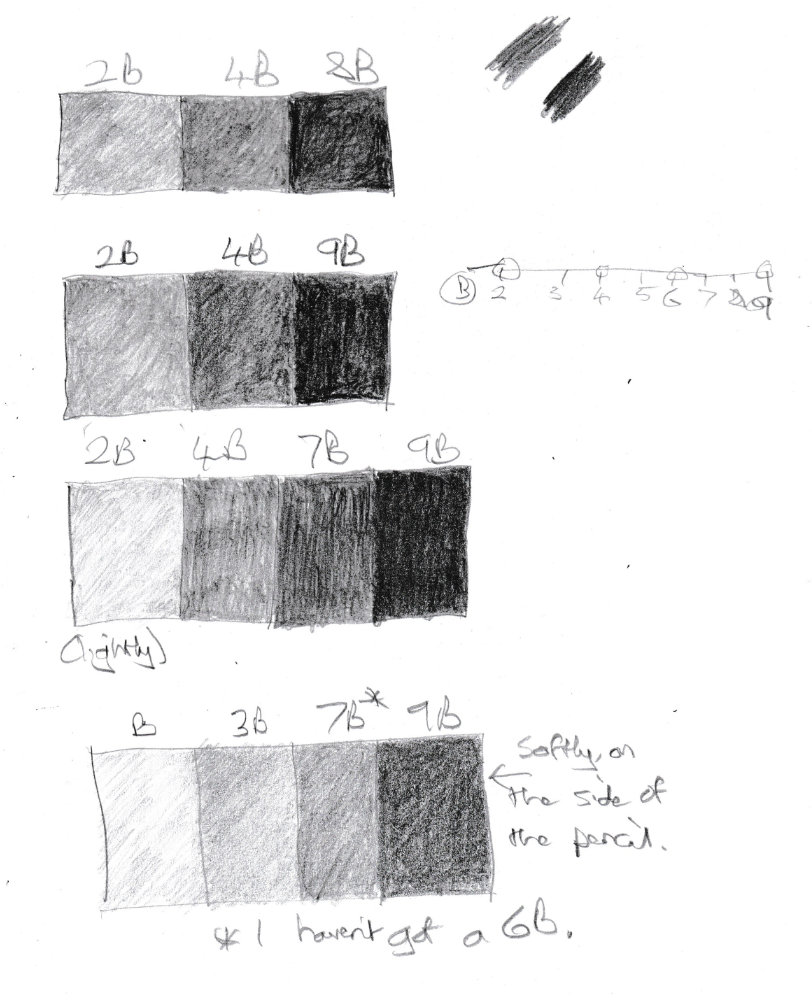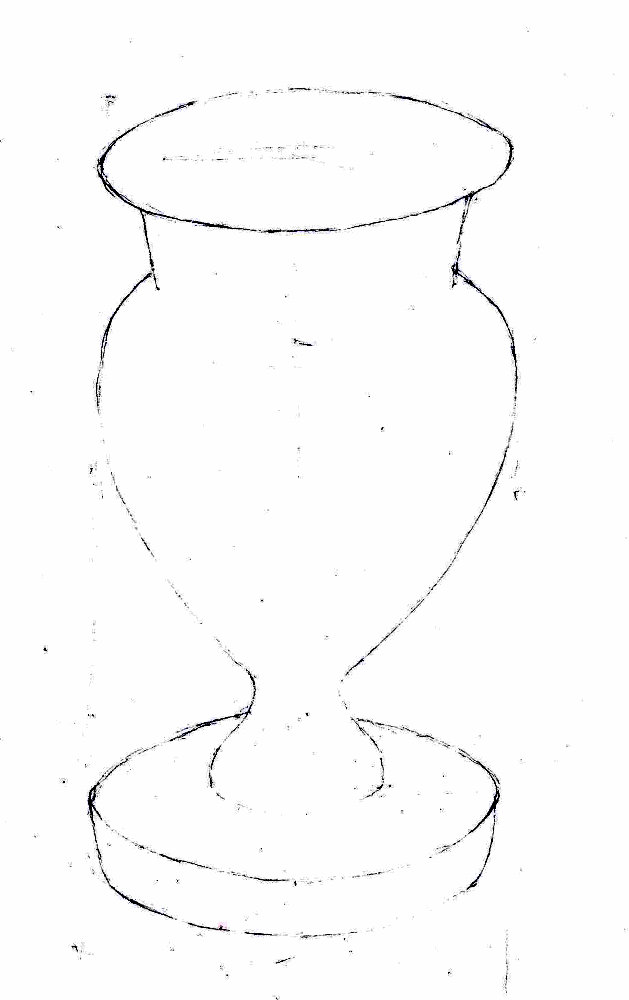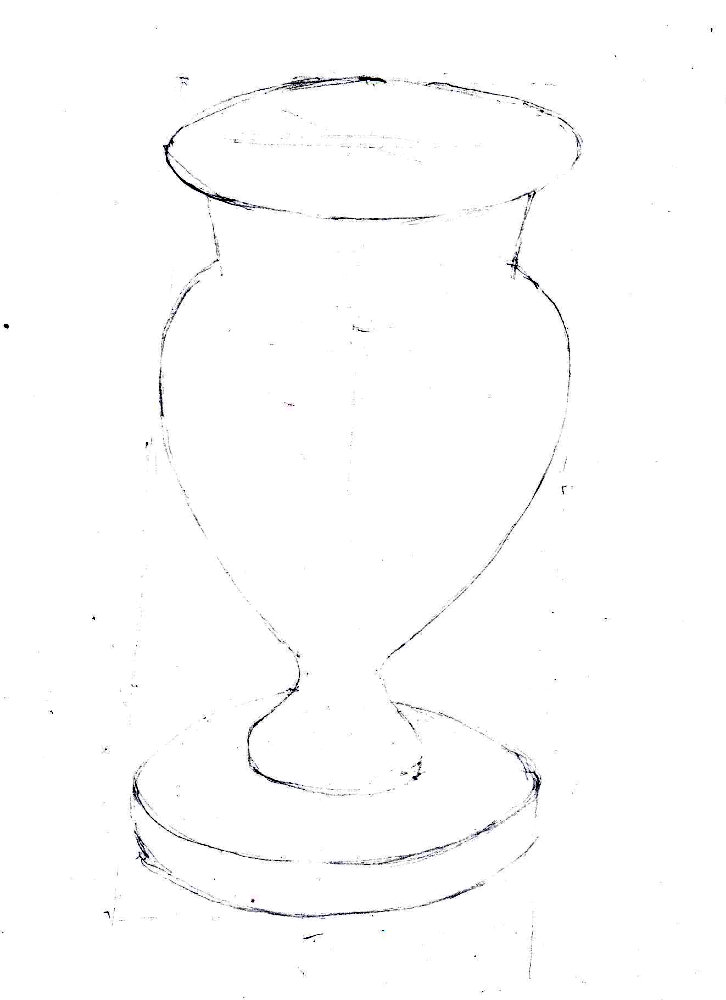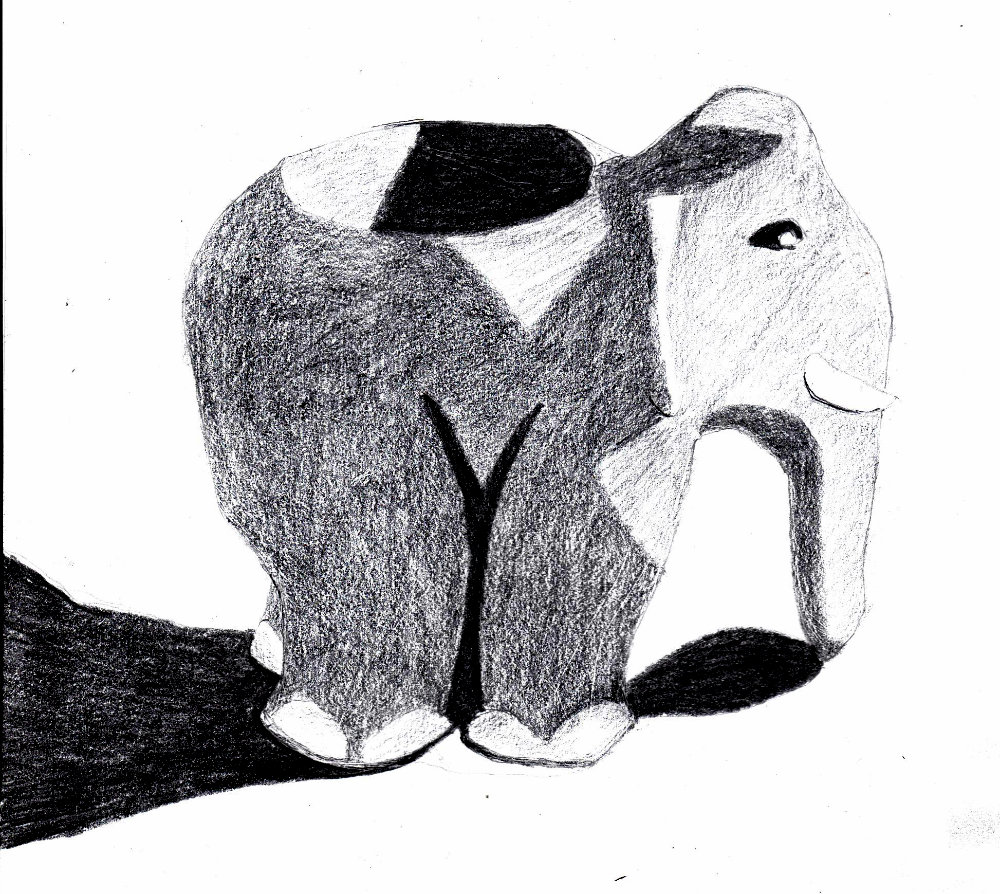
Not a great success, for some reason. The elephant is stained a darker colour here and there and this threw me. It’s hard to distinguish the stain from shadows. This is a fundamental problem – to distinguish between dark colours on the object and shadows. Does it matter? Yes, because the dark colour will get light and darker as it leaves and enters shadows. You need to be aware of that. Need to look at the elephant again tomorrow to see what went wrong.
